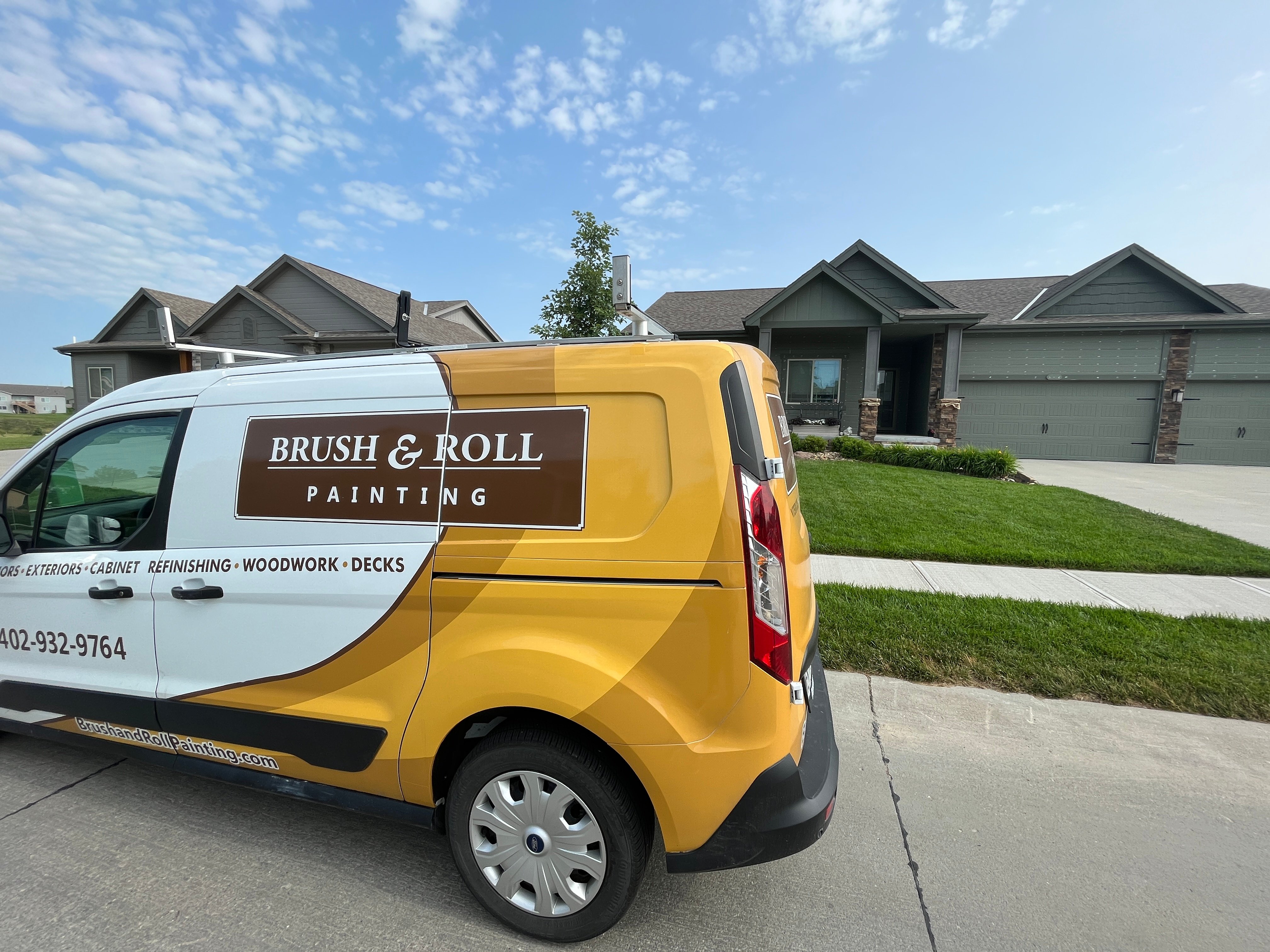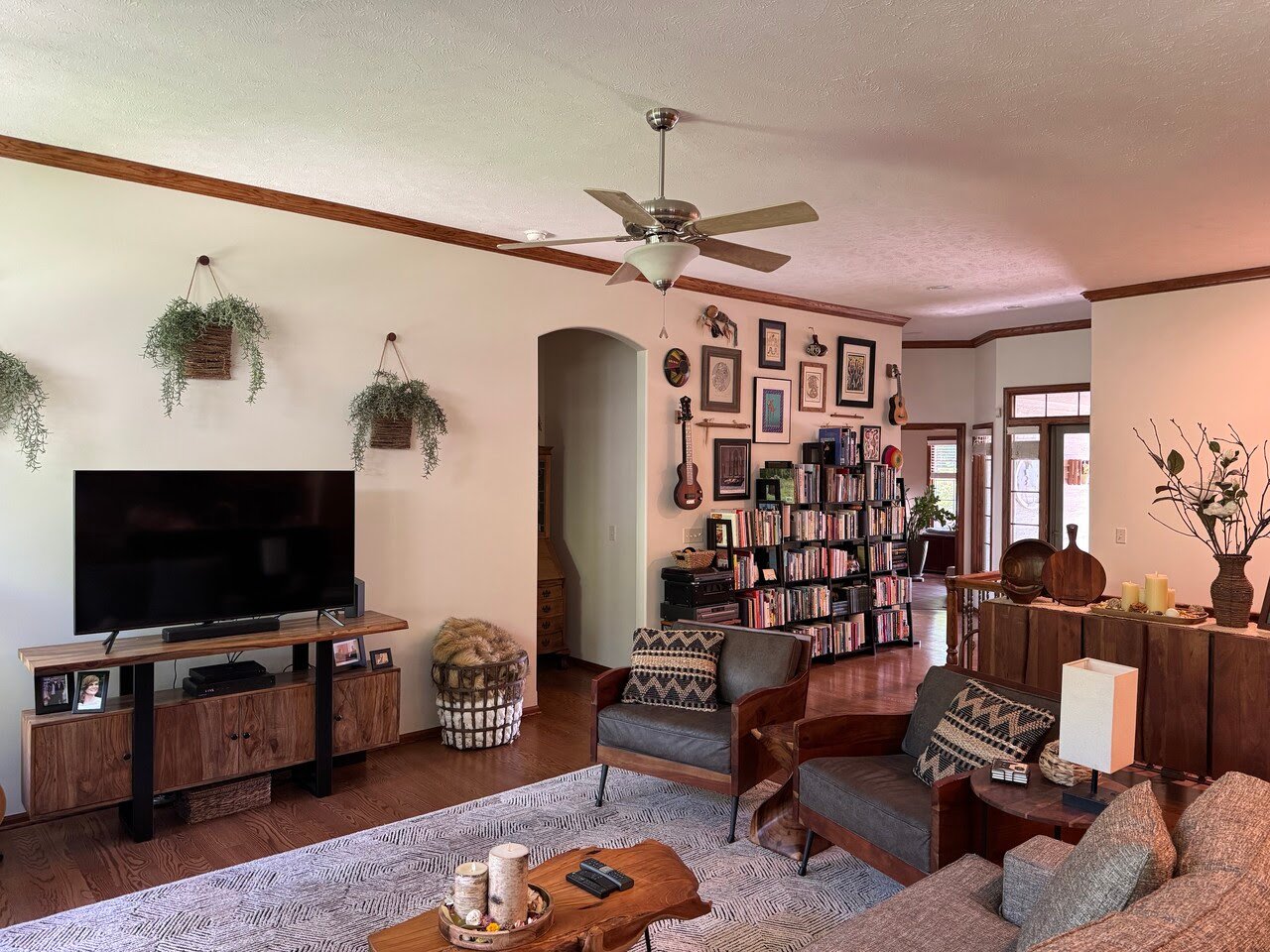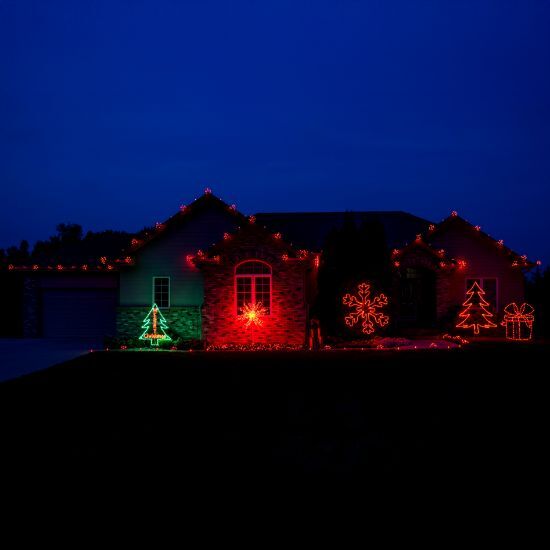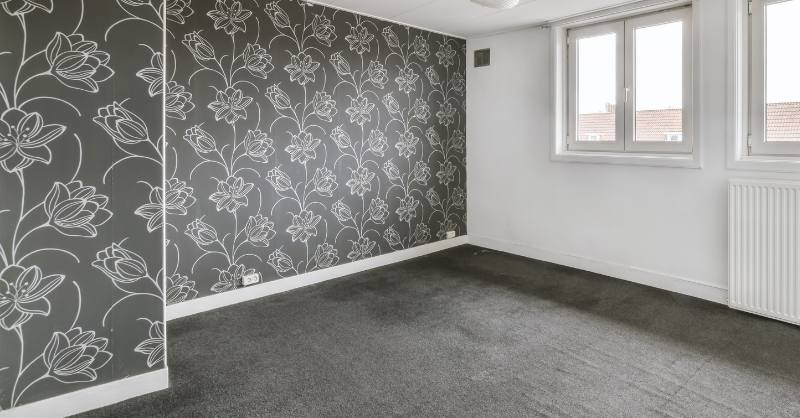
Wallpaper, especially the peel-and-stick kind that’s popular right now, adds instant personality to a room, but it also adds new questions about care and cleaning. Unlike traditional painted walls, wallpaper has texture, patterns, and materials that can’t always be scrubbed the way a painted surface can.
At Brush & Roll Painting, we’ve been helping Omaha homeowners with their interior finishes since 1996. That includes paint, wallpaper, woodwork — you name it. We’ve seen the return of wallpaper firsthand and understand how exciting it is to bring it into your home. But we also know that if you don’t take care of it properly, it can look worn out fast. That’s why we’re here — not just to install or paint but to help you keep your home looking beautiful.
In this article, you’ll walk away with clear and practical steps for how to clean and maintain wallpaper in your home, especially peel-and-stick wallpaper, which has become the go-to option for modern homeowners. We’ll break down what to avoid, what works best, and how to make small repairs if needed. You’ll be able to protect your wallpaper from stains, dirt, and damage — and make sure it lasts for years, not just months.
Understanding Your Wallpaper Type: Peel and Stick vs Traditional
Before you can clean your wallpaper, it’s important to know what kind you have. Most homeowners these days are using peel-and-stick wallpaper, which is made from vinyl or a vinyl blend. This makes it easier to install and also easier to clean than older styles like paper-based or fabric wallpaper.
Here’s a quick breakdown:
- Peel-and-Stick Wallpaper: Usually made from vinyl or PVC. Slightly glossy. Water-resistant. It can be wiped clean gently.
- Traditional Wallpaper (glue-applied): Can be vinyl-coated or paper. More delicate depending on the material. Requires extra care when cleaning.
- Fabric or Grasscloth Wallpaper: Very delicate. Usually dry-clean only (no water or soap). Best to dust with a microfiber cloth.
If you’re unsure what type you have, try dabbing a small, hidden section with a damp cloth. If water absorbs quickly or discolors the area, avoid using water-based cleaners.
-Apr-14-2025-02-01-14-0901-PM.png?width=601&height=314&name=Blog%20Post%20Image%20Size%20(1)-Apr-14-2025-02-01-14-0901-PM.png)
When Should You Clean Your Wallpaper?
Just like anything else in your home, your wallpaper needs a little upkeep to stay looking good. And the good news is — it doesn’t take much.
Here are some simple ways to keep your wallpaper clean:
- Dust it regularly: Use a soft microfiber cloth, feather duster, or even the brush attachment on your vacuum. This keeps cobwebs, dust, and pet hair from sticking to it.
- Wipe fingerprints early: If you see marks near light switches, door frames, or spots your kids tend to touch, gently wipe with a damp (not soaking) cloth.
- Avoid harsh cleaners: Do not use bleach, abrasive scrubbers, or alcohol or ammonia-based sprays. These can fade or peel the wallpaper.
Think of your wallpaper like a nice piece of clothing; treat it gently, and you’ll extend its life.
-Sep-20-2024-02-30-03-0001-PM.png?width=628&height=328&name=Blog%20Post%20Image%20Size%20(4)-Sep-20-2024-02-30-03-0001-PM.png)
How to Clean Peel-and-Stick Wallpaper Safely
Peel-and-stick wallpaper is one of the easiest types to care for, but it’s still not invincible. Here's how to clean it without damaging the adhesive or the surface:
1. Start with a dry dusting
Always dust first. You don’t want to rub dirt into the wallpaper while wiping. Use a microfiber cloth or a vacuum with a brush attachment.
2. Mix a gentle cleaner
You can make a simple cleaning solution at home:
- 1 cup warm water
- A few drops of dish soap (something gentle like Dawn)
Dip a soft sponge or cloth into the solution, wring it out well, and gently dab the wallpaper. Never scrub.
3. Test in a hidden spot
Even with gentle cleaners, always test a small area first — like behind a door or piece of furniture — to make sure it doesn’t affect the color or pattern.
4. Dab, don’t rub
Pat the area with a damp cloth or sponge. Then dry it right away with a soft towel. This keeps water from seeping behind the wallpaper and lifting the edges.
5. Avoid excess water
Never spray wallpaper directly. It might be water-resistant, but too much moisture can get behind the seams and weaken the adhesive.
Wallpaper Spots That Need Extra Cleaning
If you have wallpaper in any of these areas, you might need to clean them more often:
- Entryways and hallways: Fingerprints, bag scuffs, or dirt from outside.
- Kitchen walls: Grease splashes, especially near stovetops or sinks.
- Bathrooms: Steam and moisture can cause problems if the wallpaper isn’t vinyl-based or sealed properly.
- Kids' rooms: Crayons, stickers, food, you name it. Stick with washable wallpaper if you can!
If you’re designing a space and haven’t hung the wallpaper yet, think twice before putting it near messy or high-traffic zones — or just choose patterns that hide imperfections better (like textures or mid-tones).
-May-07-2025-01-34-40-4699-PM.png?width=563&height=294&name=Blog%20Post%20Image%20Size%20(2)-May-07-2025-01-34-40-4699-PM.png)
What to Do if Your Wallpaper Starts to Peel
It’s normal for peel-and-stick wallpaper to start lifting at the edges over time, especially near corners, outlets, or if moisture got underneath. Don’t panic. You don’t have to replace the whole thing.
Here’s how to fix a small peeling area:
- Clean the wall and the back of the wallpaper with a damp cloth. Let both dry fully.
- Apply a little wallpaper adhesive (you can buy this at hardware stores) to the back of the lifted section.
- Press it firmly back in place, smoothing from the inside out to push out any air bubbles.
- Wipe away any excess glue with a damp cloth before it dries.
If it keeps peeling, it might be due to poor adhesion from the start. Sometimes, the wall wasn’t cleaned properly before installation, or the wallpaper was placed over a surface that wasn’t primed or smooth.
-May-07-2025-01-35-10-1491-PM.png?width=599&height=313&name=Blog%20Post%20Image%20Size%20(1)-May-07-2025-01-35-10-1491-PM.png)
Mistakes to Avoid When Cleaning Wallpaper
A few common mistakes can quickly turn a small smudge into a bigger problem. Here’s what to watch out for:
- Using abrasive sponges or brushes – These can tear or scratch the wallpaper surface.
- Letting water sit – Always blot dry after cleaning.
- Spray directly onto the wall – Spray your cloth, not the wallpaper.
- Skipping the dusting step – Rubbing dusty wallpaper with a wet cloth can grind dirt it.
- Cleaning with bleach or alcohol – These can stain or cause the wallpaper to lose color.
When to Hire a Painter for Wallpaper
If your wallpaper is stained beyond cleaning, bubbled from too much moisture, or just looking tired, it may be time to replace it—or consider painting instead. At Brush & Roll Painting, we’re happy to talk with Omaha homeowners about whether a wallpaper refresh or switch to paint might be the better long-term option.
But if you just need some advice on maintaining what you have, we’re here for that too.
Wallpaper Installation and Removal in Omaha, NE
If you’ve made it this far, you now know how to keep your wallpaper — especially peel-and-stick — clean, fresh, and looking like new. Whether you’re wiping off spaghetti sauce from your kitchen wall or dusting your hallway accent wall, you’ve got a realistic plan for taking care of your wallpaper without damaging it.
We know it can be frustrating to see smudges or peeling, but with a little care and the right cleaning habits, your wallpaper can last for years. No need to replace it every time life gets a little messy.
Brush & Roll Painting has helped Omaha homeowners with their painting and wallpaper needs since 1996. We’re here to be a trusted resource — whether you’re working on a new project or just want to protect the beautiful finishes you already have.
Click the button below to get a quote for your next painting or wallpaper project.
If you're thinking about removing old wallpaper, replacing it with a new style, or installing wallpaper for the first time, click the button below to get your guide to hiring a painter. While peel-and-stick options make it look easy, proper wallpaper installation — and especially removal — can get tricky fast.
A good painter will know how to prep the walls the right way, fix any damage underneath, and make sure the wallpaper goes up smoothly and stays put. This guide can help you ask the right questions, compare estimates, and make sure you're choosing someone who has real experience with wallpaper, not just paint.
Kaylea is the Brush & Roll Painting Content Manager. Kaylea is a Journalism and Media Communications summa cum laude graduate with a minor in Marketing from the University of Nebraska at Omaha. Kaylea manages the marketing for Brush & Roll Painting.
Topics:
















-Jul-23-2025-02-21-33-5468-PM.png?width=800&height=418&name=Blog%20Post%20Image%20Size%20(2)-Jul-23-2025-02-21-33-5468-PM.png)


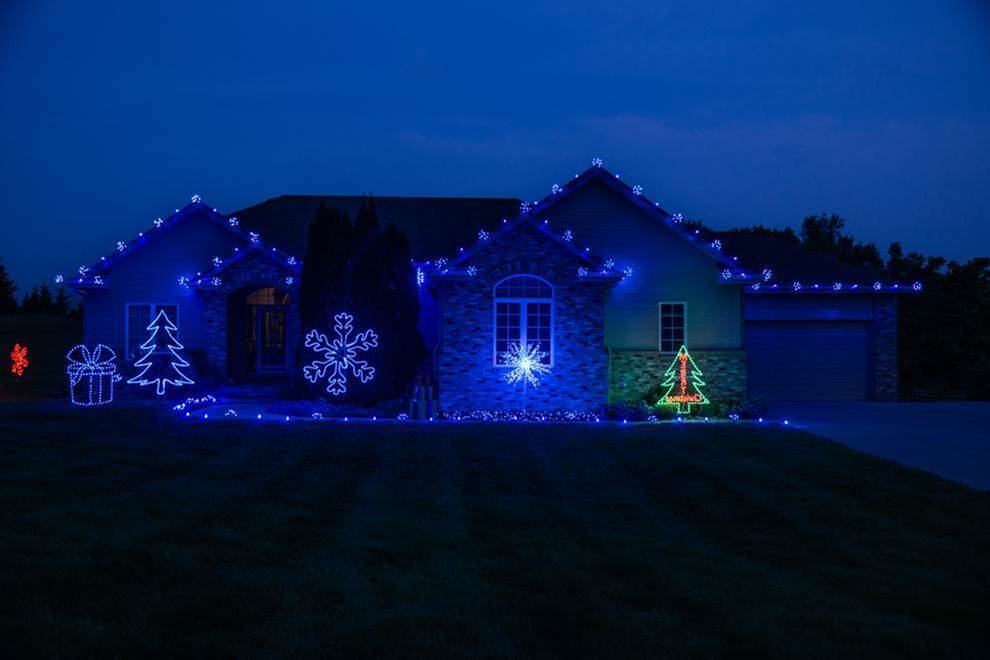
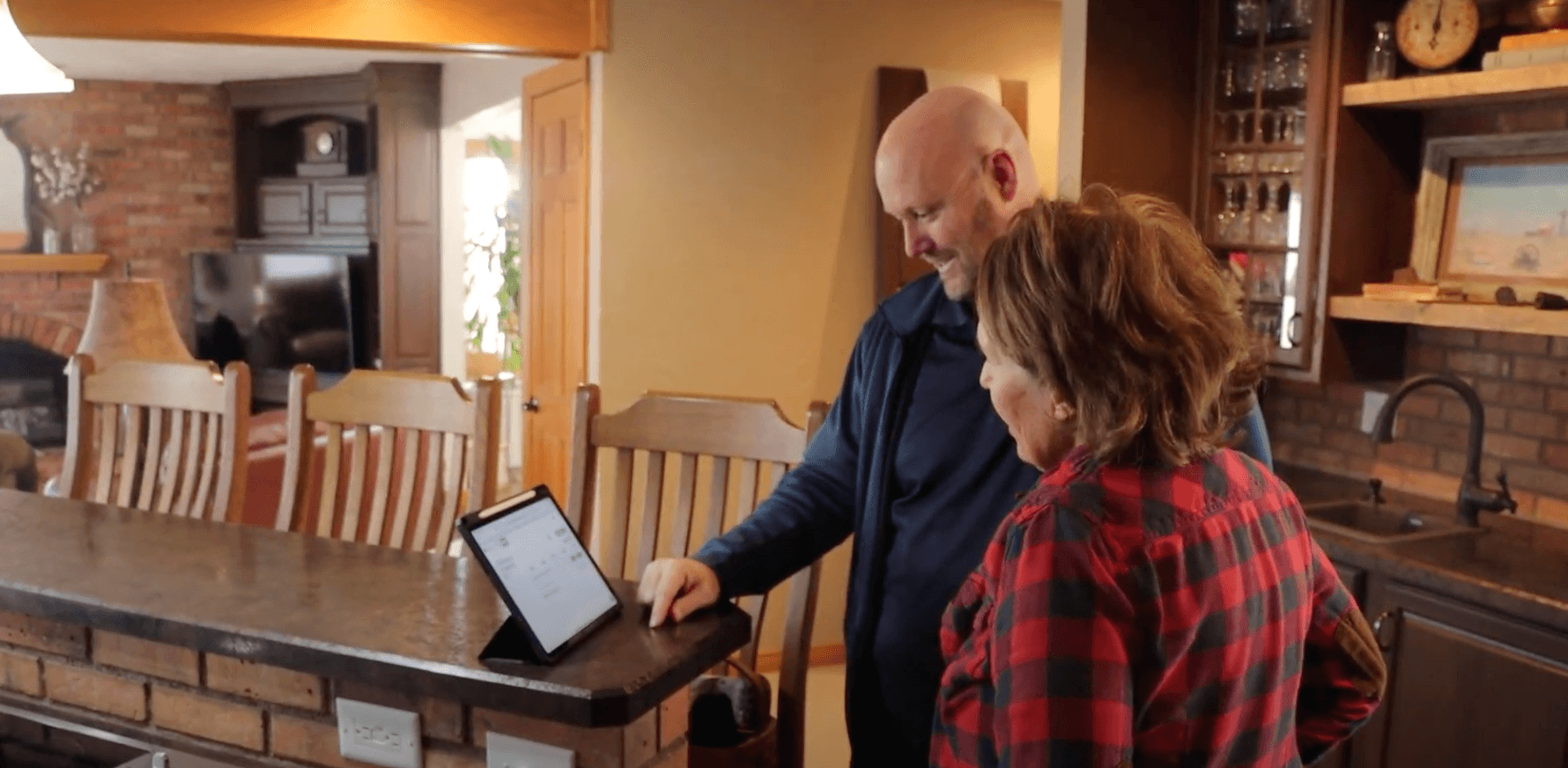
-Oct-22-2025-01-39-19-5208-PM.png?width=800&height=418&name=Blog%20Post%20Image%20Size%20(1)-Oct-22-2025-01-39-19-5208-PM.png)
